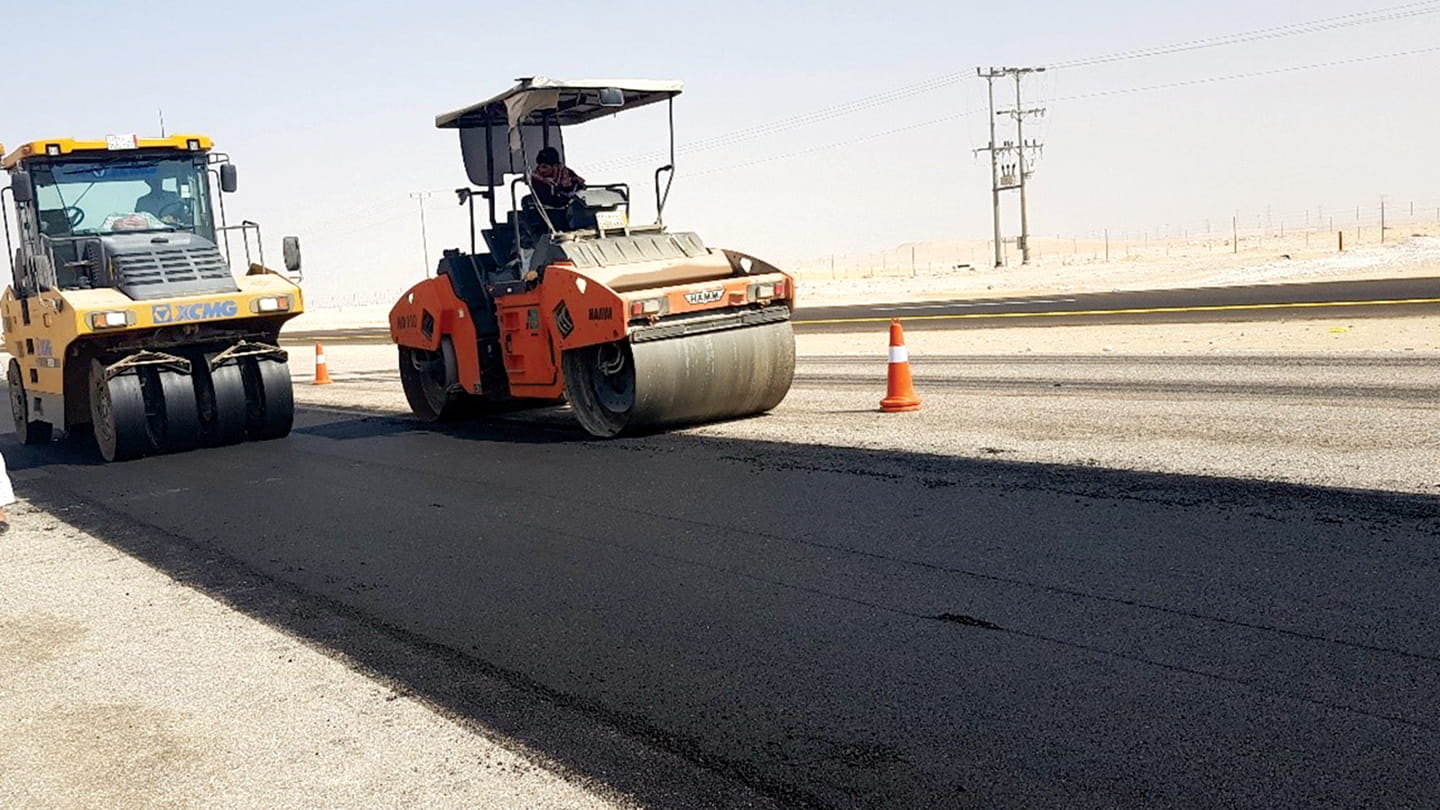Innovative industrial recycling
Turning a circular economy.

- A circular economy values reuse rather than single use
- Recycling reduces greenhouse gas emissions and saves money
- Highway asphalt can be improved with recycled plastic
Eliminating waste by carefully managing the use of resources is a hallmark of the circular economy. Rather than the modern habit of using a resource only once in many developed societies, a circular economy values the reuse of that same resource.
Aramco’s chief technology officer Ahmad O. Al-Khowaiter defines a circular economy as moving from a linear model. He says it is moving from where materials are used and then disposed, to a more circular manner through the reduction of consumption, reuse, and recycle.
Vision 2030, Saudi Arabia’s bold blueprint for the Kingdom’s future, includes safeguarding the country’s environment by improving recycling. At Aramco, we are delivering some particularly inspiring recycling.

Turning waste into money
Regardless of the industry type, it produces industrial waste, and much of it is difficult to treat and has adverse environmental impacts. Haradh Gas Plant successfully recycled 3,500 kilograms of deteriorated high-density polyethylene from a wastewater evaporation pond into plastic products, namely flower pots, cable pipes, and other useful products.
“High-density polyethylene is difficult to recycle, yet the Haradh Gas Plant Department team brought an innovative approach to find a way to collect and clean it, then regrind it for use with new high-density polyethylene and linear low-density polyethylene pellets, which is used for manufacturing different plastic products,” said environmental coordinator, AbdulRahman Lashkar.
“This initiative has not only enabled us to avoid the emissions of greenhouse gases resulting from incarnation by around 3.5 tons of carbon dioxide equivalent, but we also avoided the disposal cost, optimizing the defined budget by 40%.”
Recycling airport landing strip
Our remote Shaybah mega-facility is situated in the world’s largest continuous body of sand, the Rub’ al-Khali (or Empty Quarter), one of the harshest environments on Earth. After many years of service, it was time in 2019 for a refurbishment of the site’s airport runway, which handles aircraft from across the Aramco fleet, and also aircraft up to the size of a Boeing B767.
We decided to resurface the 10,000-foot runway using the rubblization method, which includes using the concrete already in place as the base layer. This meant that rather than disposing of it as waste, the concrete was chopped and broken up by specialist equipment to form a base layer for asphalting.
Building roads with recycled plastic

Aramco piloted its “Plastic Road” technology last year when it built a highway using recycled plastic, which can improve the asphalt’s performance against the Kingdom’s high temperatures.
For the first time ever, Aramco last year used recycled plastic to build a road on a stretch of highway owned by the company. After being added to asphalt, recycled plastic can increase the strength of the asphalt concrete mix, reduce the amount of bitumen used in the asphalt mix by up to 10%, making it an economical choice.
The use of plastic improves the stiffness of the asphalt mix, as well as the durability and overall performance of the asphalt pavement, making it a sustainable and environmentally-friendly construction option. With plastic waste a major environmental issue, the plastic road technology contributes toward a circular economy by eliminating waste and enhancing the continual use of used plastics.



